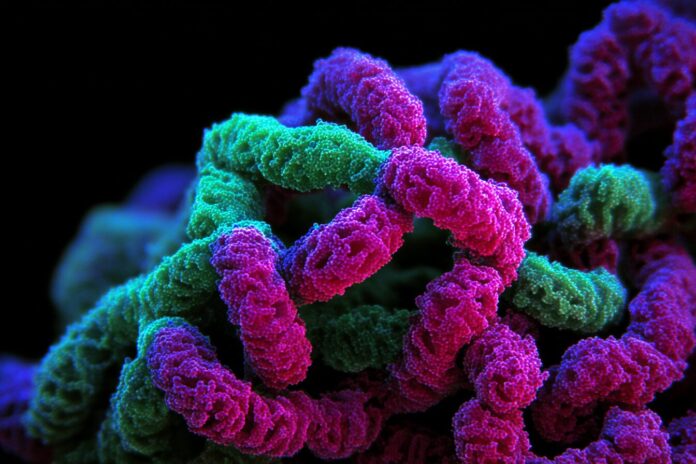Revolutionizing Quantum Sensing with Living Proteins
In an unprecedented convergence of biology and quantum technology, scientists at the University of Chicago have unlocked a way for a fluorescent protein—famous for making jellyfish glow—to become a functioning quantum bit, or qubit. This groundbreaking discovery paves the way for advanced quantum sensing techniques directly inside living cells, fundamentally transforming both quantum technology and biological research. Because this research bridges previously incompatible fields, it offers a new methodology for analyzing cellular microenvironments.
Most importantly, the integration of quantum physics with biological systems provides a pathway for innovations that were once the realm of science fiction. Therefore, by harnessing the natural properties of proteins, these scientists have not only expanded our understanding of quantum states but also initiated a paradigm shift in how we detect and visualize processes within living organisms. In addition, recent coverage by Quantum Computing Report and other reputable media underscores the significance of this pioneering work.
Why Biological Qubits Matter
The utility of qubits lies in their ability to exist in multiple states simultaneously, a phenomenon known as superposition. Unlike classical bits that can only adopt a state of 0 or 1, qubits can process complex information far more efficiently. Because of this, quantum bits hold promise for revolutionizing areas such as cryptography, computational modeling, and sensing technologies.
Historically, qubits have been created using artificial systems such as diamond defects or superconducting circuits. However, these systems require extreme conditions including high isolation and low temperatures to maintain stability. Besides that, integrating them into biological environments has been challenging. With the shift toward protein-based qubits, researchers can now operate within the naturally warm and dynamic environment of living cells. Hence, this breakthrough makes quantum technologies more accessible and practical for real-world applications, as highlighted by Bioengineer.org.
Turning Glow Proteins Into Quantum Sensors
The breakthrough centered on the enhanced yellow fluorescent protein (EYFP), a protein well-known to biologists for its luminescent properties. Scientists discovered that EYFP contains a hidden energy configuration called a “triplet state,” which until recently went unnoticed for quantum applications. Most importantly, this discovery allowed them to exploit the protein’s inherent quantum properties, a concept that is gradually gaining momentum in the quantum research community.
By using a precisely timed near-infrared laser, researchers were able to read the triplet state and distinguish its distinct quantum spin states. Therefore, with subsequent microwave pulses, they could manipulate these spins, fulfilling the essential requirements for bona fide quantum operations. Interestingly, some experimental protocols still benefit from low temperatures to maintain coherence, but key results were demonstrated at room temperature within bacterial cells. This advancement suggests that practical, in vivo quantum sensing is within reach, a fact supported by reports from Popular Mechanics.
Quantum Sensing Inside Living Systems
For decades, quantum devices have struggled to retain their delicate states outside of controlled laboratory environments. However, protein-based qubits can be genetically encoded and self-assembled by living cells. This capability not only enables precise positioning within the complex architecture of cellular machinery but also allows for long-term integration and stability in a biological context.
Because cells naturally replicate and evolve, they offer a self-sustaining mechanism to host quantum sensors permanently. Most importantly, this opens astonishing opportunities such as quantum-enabled nanoscale MRI and ultra-sensitive real-time cellular monitoring. For instance, these protein-based qubits could be employed to detect minute electric and magnetic fluctuations, thereby refining imaging techniques and opening new frontiers in diagnostics. Detailed analysis by The Quantum Insider provides further insights into these transformative possibilities.
Challenges and Opportunities in Quantum Biology
Even though protein-based qubits do not yet match the sensitivity and coherence times of some solid-state counterparts, their ease of genetic encoding offers unmatched flexibility. Therefore, researchers anticipate that these biological sensors could usher in a new era where quantum operations are seamlessly integrated with biological systems. Besides that, the inherent scalability of using proteins could eventually overcome limitations associated with conventional quantum devices.
Because these qubits can be programmed by the cells themselves, future applications might include advanced cellular imaging, all-optical biosensors, and even the development of living quantum computers. Notably, interdisciplinary teams are now exploring ways to enhance the stability and durability of these qubits within cellular environments, an endeavor that signals promising avenues for medical and technological breakthroughs, as mentioned by Singularity Hub.
Looking Ahead: Bridging Quantum Physics and Biology
The synthesis of quantum physics and cellular biology is not merely an academic exercise—it represents a revolutionary fusion of disciplines. Because quantum sensors based on fluorescent proteins promise unprecedented integration within living systems, this breakthrough could transform fundamental research and applied technology. Scientists now envision a future where quantum-enhanced imaging and diagnostics revolutionize our understanding of the cellular world.
Most importantly, this advance demonstrates that living systems can play an active role in constructing quantum technologies. Consequently, future developments may enable biological systems to not only host but also generate complex quantum architectures, paving the way for breakthrough therapies and ultra-sensitive diagnostic techniques. Such potential is powerfully illustrated in recent reports by CBS News and further substantiated by studies from the University of Chicago.
References and Further Reading
For further details and in-depth discussions on this pioneering research, please refer to the following sources:
- Quantum Computing Report – Detailed analysis of the protein qubit development.
- The Brighter Side News – Insights on global firsts in programming living cells to create biological qubits.
- Popular Mechanics – A comprehensive overview of how qubit proteins function in cells.
- Bioengineer.org – A multidisciplinary perspective on the breakthrough in biological qubits.
- The Quantum Insider – Discussion on how protein-based qubits may bridge quantum computing and biology.
- Singularity Hub – Reports on biological qubits acting as quantum sensors within living cells.
- CBS News – Coverage of the University of Chicago researchers’ breakthrough in biological qubits.



